October has been one of the wettest months on record and the current weather forecast is not much better with even more rain forecast for the start of November.
Most winter games pitches will now be at field capacity and any more rain is likely to tip the balance, especially on non- drained pitches, causing them to become saturated / waterlogged. Once in this state they are prone to damage either from play and training or indeed from trying to carry out maintenance tasks.
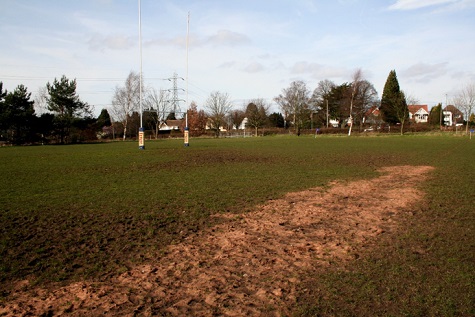
Pore spaces, particularly in soil dominant pitches, will be filled with water (saturated). Playing on saturated pitches will certainly result in surface damage. Soils, when saturated, lose their stability and strength. The action of players running, stopping, sliding and turning in studded or bladed boots will result in surface damage. The severity of the damage will be dependent upon the soil type and the ability of the top 100mm to drain quickly.
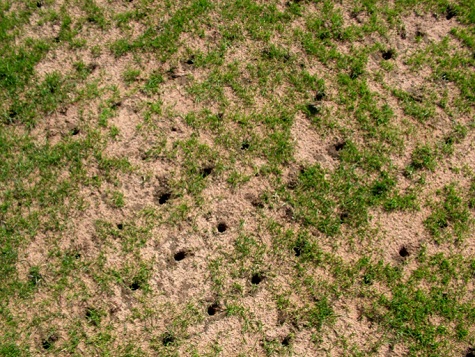
To help keep the top 100mm free draining, a programme of surface aeration is necessary. This is achieved by regular spiking with slit tines to a depth of 150 mm or more when conditions allow. There are specialist machines that can help with improving surface drainage, for example the versatile tractor mounted Verti-Drain machine and linear aerators have been around for many years and continue to do a good job of decompacting pitches down to a depth of 200mm. In recent years we have seen the development of a lot of compressed air aided machines such as the Sisis Javelin Aer-Aid 1500, AirG2, GP Air machine , OxyShot and The Airter to name a few that can aerate to greater depths.
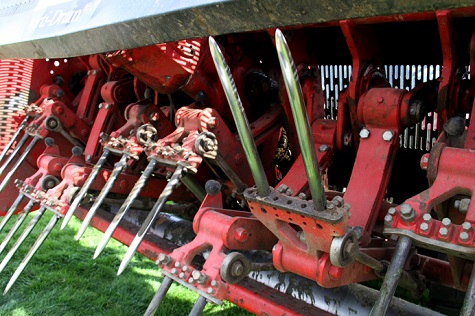
- The GP Air machine is a variable depth pedestrian ground aerator, blowing compressed air in 4 directions into the ground.
- The Air- 2G2 is a self-propelled hydrostatic drive three probe air injection machine, injecting compressed air to either 175mm7″ or 300mm deep (depending upon probe fitting). This causes a fracturing effect of the compacted rootzone, with no surface disruption. Air-2G2- machine can be used for a variety of pitches including bowling greens, golf courses and rugby pitches, among others as part of sports ground maintenance routines.
- The Airter light 14160 is a completely redesigned pneumatic soil aeration device for professionals, which loosens the lawn root zone homogeneously to a depth of more than 22 cm and supplies it with fresh oxygen.
- The Charterhouse OxyShot Air-Injection Unit has a single probe which is available in two diameters, the machine is compact and manoeuvrable allowing easy access to normally difficult to reach areas. The, OxyShot® probe blasts air in 4 directions at variable pressures to a depth and duration that the operator requires down to a maximum of 500mm using the 25mm diameter probe, thus lifting, expanding and de-compacting the soil.
- Javelin Aer-Aid 1500 machine is a specially designed tractor mounted vertical action aerator for use on both fine and outfield turf. The Aer-Aid system injects air directly into the root zone speeding up the aeration process, moving air uniformly throughout the root zone for complete aeration – not just where the tines have penetrated. The cam trigger mechanism ensures that the air is always expelled at the bottom of the tine penetration enabling treatment to be targeted precisely.
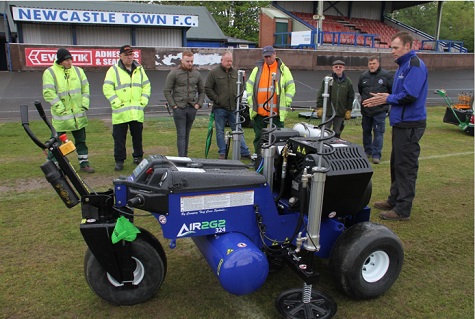
All these machines are able to offer a different method of decompaction and the results will be defined by how well the machine has been used and the experience of the operator. Also, the timing of when the work is done will also have a bearing on its success.
Depending on the severity of the compaction it may well take more than one operation to achieve the desired results. Many more sports grounds are beginning to use these type of aerators on a more regular basis, say between 2-3 times a year. Several sports facilities are now utilising all three methods (Verti-Drain, linear and air compressed) aeration methods to relieve compaction on their playing surfaces.
The months of October / November and March tend to be the busiest periods for aeration work on most sports facilities when the ground conditions are favourable. However, if you have a fully drained pitch, aeration work can be done virtually any time of the year.
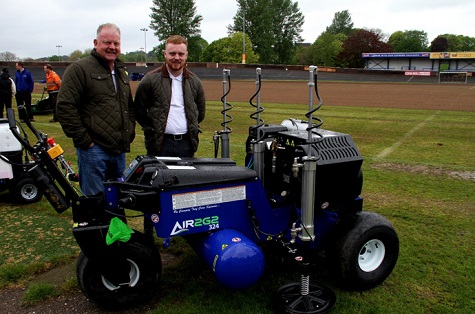
Most golf clubs tend to aerate their fairways during the autumn to help improve their playability during the winter months. In fact next week I have organised a demonstration of two of the above mentioned machines, The Air- 2G2 and the Charterhouse OxyShot to be trialled on two fairways at Lilleshall Golf Club, Shropshire. Kevin Moult md of Air 2 Root Turf Care & Soil Solutions Limited has kindly offered to carry out this demonstration to enable the head greenkeeper and director of golf the chance to see these two machines in operation with the aim of solving some surface water problems on these two fairways.
I am really looking forward to seeing these two machines in action and will be conducting a full report to be published in TurfPro in the coming weeks.
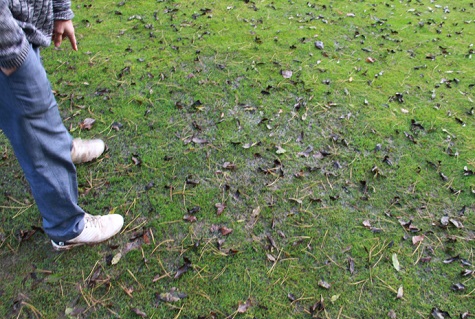
Seasonal turf problems
Turf disease can become quite prevalent in November when soil moisture levels increase, coupled with the presence of early morning dews. The combination of moist soils and surface moisture on the leaf blade can increase the likelihood of disease attack. Regular brushing in the mornings to remove the dew from the playing surfaces will reduce this risk.
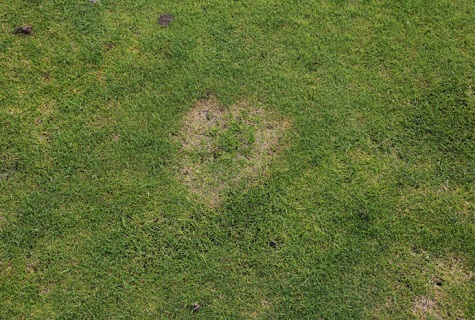
Fusarium patch remains arguably our most common and most damaging turfgrass disease seen on golf greens. This fungus will grow most actively under high pH conditions but any small increase in pH, even under generally more acidic conditions, will allow the fungus to grow more quickly than other organisms that normally ensure a healthy balance in the rootzone. In addition, this fungus can grow at temperatures just above freezing and is not actually killed by frost.
Earthworm activity usually increases in November. Earthworms can survive in a wide range of conditions, but most activity is dependent on the quality of food available. Worms like plenty of organic matter, therefore greens with a high thatch problem tend to encourage worm activity. Soil pH also affects where earthworms are found. In strongly acid or alkaline soils earthworms are rarely seen (pH less than 4.5 or greater than 8). The soil texture will also affect the number of earthworms found; they prefer clay soils and are less frequently found in sandy soils.
Worm activity inevitability leads to worm casts appearing on the playing surface. These worm casts can be very problematic, they tend to smear the surface, which in turn can affect surface water drainage capacity as well as providing a seed bed for weed germination.